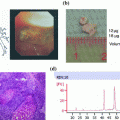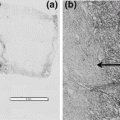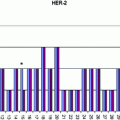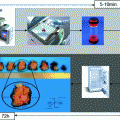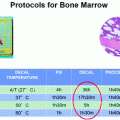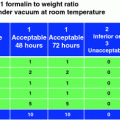© Springer International Publishing Switzerland 2015
Manfred Dietel, Christian Wittekind, Gianni Bussolati and Moritz von Winterfeld (eds.)Pre-Analytics of Pathological Specimens in OncologyRecent Results in Cancer Research19910.1007/978-3-319-13957-9_3The Evolution of Pre-analytic Factors in Anatomic Pathology
(1)
Laboratory of Pathology, Center for Cancer Research, National Cancer Institute, National Institutes of Health, 10 Center Drive, MSC 1500, Bethesda, MD 20892, USA
Abstract
Anatomic Pathology has continuously evolved since launch by Virchow in Berlin. The era from 1990 to 2010 saw the rise of immunohistochemistry and its application for diagnosis, prognosis, and prediction of response to therapy. Currently the next wave of evolution is ongoing; molecular pathology, with emphasis on alterations to DNA, and expression of mRNA as biomarkers. The interrogation of biomolecules by specific probes is more demanding on specimens than the traditional application of histologic stains to tissue. This issue is juxtaposed to the fact that the majority of specimens are purely evaluated by histomorphology, for which current specimen practices are adequate. The capacity to identify a priori which cassette of tissue is appropriate for molecular analysis is difficult, if not impossible, the goal is to improve the quality of all pathology specimens in an economically viable model to enable advanced assay, when applicable.
1 Introduction
Anatomic Pathology has continuously evolved since launch by Virchow in Berlin. The era from 1990 to 2010 saw the rise of immunohistochemistry and its application for diagnosis, prognosis, and prediction of response to therapy. Currently the next wave of evolution is ongoing; molecular pathology, with emphasis on alterations to DNA, and expression of mRNA as biomarkers. The interrogation of biomolecules by specific probes is more demanding on specimens than the traditional application of histologic stains to tissue. This issue is juxtaposed to the fact that the majority of specimens are purely evaluated by histomorphology, for which current specimen practices are adequate. The capacity to identify a priori which cassette of tissue is appropriate for molecular analysis is difficult, if not impossible, the goal is to improve the quality of all pathology specimens in an economically viable model to enable advanced assay, when applicable.
2 Specification for Fixed Tissue
The specification of tissue preparation for pathologic examination is relatively simple. The primary goals are:
1.
Preservation of tissue in such a manner that it is a permanent record, available for re-evaluation with new diagnostic modalities.
2.
Economics are critical, as a large volume of tissue is collected and stored. The pathology laboratory is paid once, at time of diagnosis, but must store the material for a minimum of a decade. Volume of specimens drives low cost for preservation, and payment model drives low cost for storage.
3.
The collection and preservation of tissue is a labor-intensive process with multiple staff involved across sites from patient care to the laboratory. Safety must be a primary concern in handling reagents.
4.
The fixative is an anaseptic, preventing the growth of microorganisms in the tissue.
5.
The methods must be applicable worldwide, to support the fund-of-knowledge employed by pathologist, as well as allow consultation.
Although far from perfect, the use of formalin fixation and paraffin embedding has evolved as the preferred method of tissue preservation. Alternative fixatives abound, most commonly containing acids, alcohols, and/or glycols. In the past these fixatives have been limited to specialty uses, or limited geographic distributions, but have seen diminished use with the introduction of large tissue processors, and the demands for immunohistochemistry. With formalin now acknowledged as a (likely) carcinogen, it remains unclear what the fixative in widespread use 25–50 years from now will be (http://www.cancer.gov/cancertopics/factsheet/Risk/formaldehyde).
3 Evolution/Fit-for-Purpose
Although the application of formalin fixed, paraffin embedded tissue to diagnostic histopathology appears static, and relatively unchanged over the last 120 years, this is not accurate. The fixation of tissue has been carried out for centuries. Prior to the introduction of formaldehyde as a fixative in 1893 [1], alcohols and other organic-solvent based fixatives predominated. The introduction of buffers to formaldehyde solutions dates from the mid-twentieth century, and were applied to reduce the formation of “formalin-pigment”, iron-formaldehyde precipitates. These first buffers were commonly formulations of calcium. Multiple buffers have been applied since that time, largely consolidating into the use of phosphate buffers, contributing both buffering of pH as well as modification of osmolarity of the buffer. As demonstrated by Chung et al. the evolution of buffers for formalin supported the nascent development of molecular pathology, with improved RNA preservation compared to other buffers, and undoubtedly improved immunohistochemical assays, although the benefit was obscure to most investigators [2].
Concurrent with the evolution of fixation, impregnation evolved, with the introduction of the first instrumentation for the serial dehydration, clearing, and impregnation of tissue introduced in first half of the twentieth century, and the development of vacuum processing by Lillie in the 1940s [3] (SMH Library). Although beneficial, vacuum impregnation is not universally used. Many low volume laboratories, as laboratories in Africa, and other underdeveloped nations continue to rely on rotary “dip and dunk” tissue processors. Concurrent with this, reagents became more refined and standardized. Paraffins underwent a substantial advancement from preparations derived from beeswax to synthetic, lower-melting point paraffins which provide better impregnation, and result in better section quality with microtomy [4].
Stay updated, free articles. Join our Telegram channel

Full access? Get Clinical Tree


